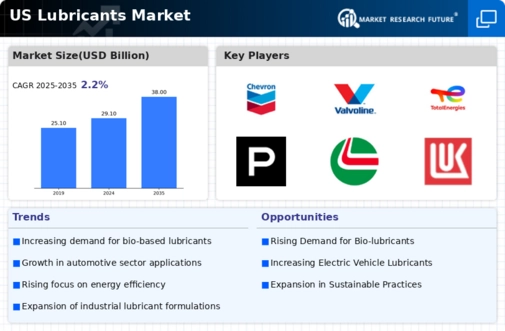The US Lubricants Market is an essential segment of the larger automotive and industrial sectors, characterized by a diverse range of products designed to reduce friction and wear in machinery and vehicles, thus enhancing efficiency and longevity. The competitive landscape in this market is shaped by several key factors, including technological advancements, consumer preferences, regulatory standards, and the economic environment. Major players in this space leverage innovation, marketing strategies, and distribution networks to capture market share and respond to competitive pressures.
The market exhibits a dynamic interplay between traditional lubricant formulations and the growing demand for high-performance and sustainable alternatives, which drives ongoing competition among established and emerging companies alike. Chevron stands out in the US Lubricants Market due to its extensive experience and robust brand recognition. The company has effectively leveraged its technical expertise and innovation to deliver high-quality lubricants that meet the diverse needs of automotive, industrial, and commercial customers. Chevron's comprehensive product lineup includes dedicated lines for motor oils, transmission fluids, and specialty lubricants, offering tailored solutions for various applications.
The company's strong distribution network and strategic partnerships enable it to access a wide customer base, thereby reinforcing its market presence. Additionally, Chevron's commitment to sustainability and performance, along with its investments in research and development, position it as a reliable choice for customers seeking effective and environmentally friendly lubrication solutions. Valvoline is another prominent player in the US Lubricants Market, known for its variety of products that cater to both consumer and commercial segments. The company offers a range of engine oils, transmission fluids, and other specialty lubricants that emphasize performance and protection.
Valvoline's market presence is enhanced by its strong retail partnerships and a robust network of quick lube franchises, making its products readily available to consumers nationwide. The company's strengths lie in its focus on quality, innovation, and customer service, which are reflected in its loyal customer base. Valvoline has also been active in strategic mergers and acquisitions to bolster its market position, expanding its product offerings and enhancing its competitive edge. By continuously adapting to market trends and customer needs, Valvoline ensures its relevance in an evolving industry landscape.




















Leave a Comment